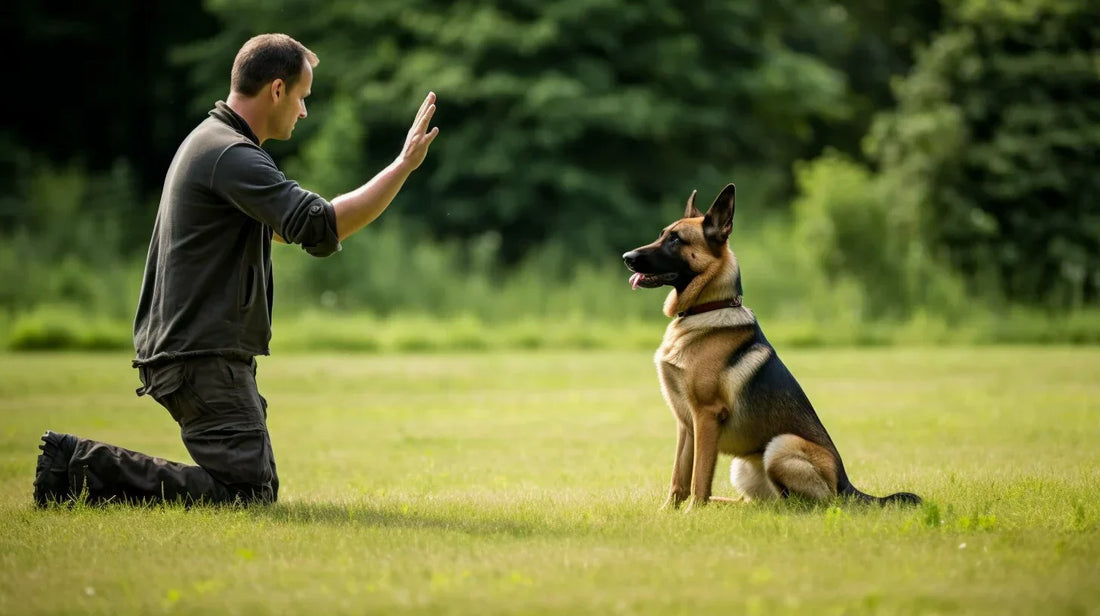As a dog owner, you want your furry friend to be well-behaved, responsive, and obedient. Dog obedience commands are a crucial part of achieving this goal. Not only do they help establish a strong communication channel between you and your dog, but they also contribute to creating an enjoyable and stress-free living environment. In this section, we will introduce the importance of dog obedience commands and how they can enhance your dog's overall behavior.
From basic to advanced, there are various types of dog obedience commands that can be utilized in training your furry friend. By mastering these commands, you can ensure a well-behaved and responsive companion. Whether you have a new puppy or an older dog, it's never too late to start training with dog obedience commands. Let's get started!
Key Takeaways:
- Dog obedience commands are essential for building a strong communication channel between you and your dog.
- There are various types of dog obedience commands, from basic to advanced, that contribute to creating a well-behaved and responsive companion.
- Training with dog obedience commands is a fun and effective technique that can be used for dogs of all ages and breeds.
Basic Dog Training Commands: The Foundation of Obedience
Training your dog is an essential part of being a responsible pet owner, and basic dog training commands form the foundation of obedience. These commands help establish communication between you and your furry friend and ensure that they behave well in different situations.
Some of the basic commands that every dog should learn include:
| Command | Description |
|---|---|
| Sit | Teaches your dog to sit on command and is useful for getting them to stay still during activities like grooming and feeding. |
| Stay | Teaches your dog to stay in one place until released and can be useful for preventing unwanted behavior or when you need to move away temporarily. |
| Down | Teaches your dog to lie down on command and is useful for calming anxious dogs or getting them to stay put in busy environments. |
| Come | Teaches your dog to come to you when called and is useful for keeping them safe in outdoor environments or during off-leash playtime. |
| Heel | Teaches your dog to walk calmly and obediently by your side, without pulling on the leash or getting distracted by other things in the environment. |
While teaching basic dog training commands, it's important to use positive reinforcement techniques such as treats, praise, and affection. Repetition and consistency are also crucial to ensure that your dog understands and retains the commands.

By mastering these basic commands, you can establish a strong foundation for your dog's obedience training and build upon them with more advanced commands. Remember to be patient and consistent in your training, and always reward good behavior to reinforce your dog's learning.
Popular Dog Commands: Enhancing Communication and Control
In addition to basic commands, popular dog commands can enhance communication and control between you and your dog. These commands are useful in everyday situations and can help your dog become more well-behaved. Below are some popular dog commands and how to teach them:
| Command | Description | How to Teach |
|---|---|---|
| Leave it | This command tells your dog to ignore something, whether it's food on the ground or a tempting toy. | Start by holding a treat in your closed hand and saying "leave it." Wait for your dog to stop trying to get the treat, then reward them with a different treat. Gradually increase the difficulty by leaving the treat on the ground or using a more tempting object. |
| Drop it | This command tells your dog to release an object from their mouth. | Start by playing a game of tug with a favorite toy. When your dog has a good grip on the toy, say "drop it" and offer a treat. Practice this with different toys and objects until your dog can drop them on command. |
| Wait | This command tells your dog to pause and wait for your signal to continue. | Start by holding your dog's leash and saying "wait." Take a step back and reward your dog for waiting. Gradually increase the distance and duration of the wait. Use this command when crossing the street or entering a new room. |
| Off | This command tells your dog to get off furniture or people. | Start by using a treat to lure your dog off the furniture or person. Say "off" as your dog gets down and reward them with a treat. Practice this consistently so your dog understands that they need to get off on command. |
By teaching your dog these popular commands, you can improve your communication and control with your furry friend and create a more well-behaved companion.
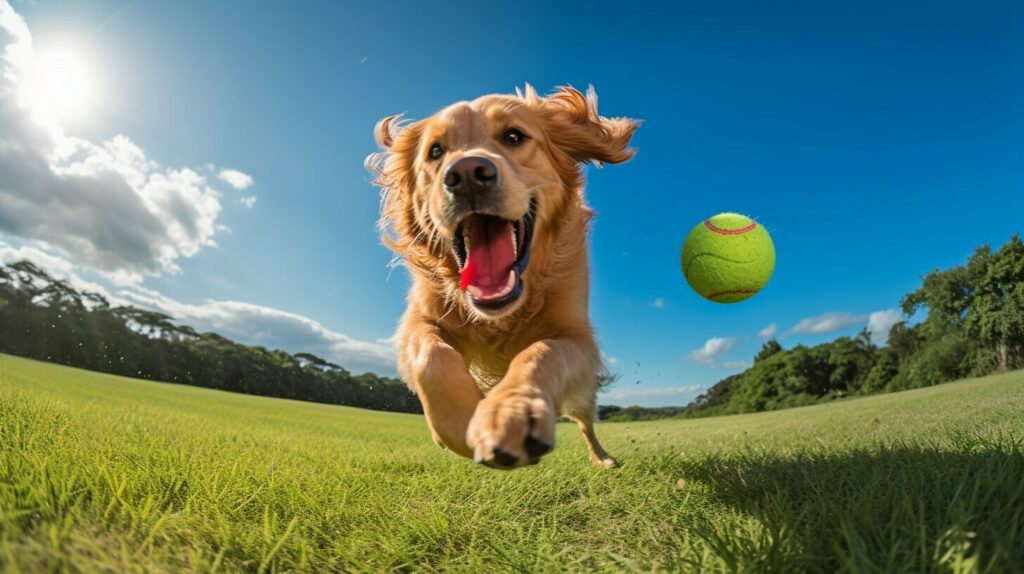
Essential Dog Obedience Commands: Building a Well-Behaved Companion
Teaching your dog essential obedience commands can help to create a well-behaved companion. Commands like "quiet," "place," "stand," and "watch me" can teach your dog discipline, attentiveness, and responsiveness in a range of situations.
To start training your dog in these commands, it's essential to understand the purpose of each one and how it contributes to overall obedience training.
| Command | Purpose |
|---|---|
| Quiet | Teaches your dog to stop barking on command, which is essential in public places or when guests come over. |
| Place | Teaches your dog to go to a designated spot and stay there, which is helpful to keep them out from underfoot or to give them a place of their own. |
| Stand | Teaches your dog to stand still, which can be very useful for grooming, vet visits or putting on a leash and collar. |
| Watch Me | Teaches your dog to make eye contact with you, which is essential for maintaining communication and control, particularly in distracting situations. |
When training your dog in these commands, it's vital to remain patient and consistent and focus on positive reinforcement techniques. Rewarding your dog for good behavior helps to establish a positive association with training and ensures they will be more likely to obey your commands in the future.

By mastering essential obedience commands, you can build a strong foundation for success in more advanced training and ensure a lasting bond of trust and respect between you and your furry friend.
List of Dog Commands: A Comprehensive Guide for Training Success
Training your dog can be a rewarding experience for both you and your furry friend. To help you on your journey, we've compiled a comprehensive list of dog commands that cover basic obedience, popular commands, and essential commands for a well-behaved companion.
Basic Dog Training Commands
| Command | Description |
|---|---|
| Sit | Teaches your dog to sit on command, a fundamental obedience behavior that can be built upon. |
| Stay | Trains your dog to hold still and maintain a steady position until released. |
| Down | Teaches your dog to lie down on command, an important command for calming anxious dogs and for situational obedience. |
| Come | Teaches your dog to come to you when called, critical for keeping your dog safe and under control. |
| Heel | Teaches your dog to walk calmly and obediently by your side, crucial for going on walks and preventing pulling. |
Popular Dog Commands
| Command | Description |
|---|---|
| Leave it | Trains your dog to ignore or leave an object alone, helpful for preventing destructive behavior and for safety. |
| Drop it | Teaches your dog to release an object on command, a useful command for playing fetch or if your dog has something they shouldn't. |
| Wait | Teaches your dog to wait in a certain spot until released, which is useful for when opening doors or crossing busy streets. |
| Off | Trains your dog to stop jumping up on people or furniture, an important behavior for keeping your dog under control and well-behaved. |
Essential Dog Obedience Commands
| Command | Description |
|---|---|
| Quiet | Teaches your dog to stop barking on command, a crucial command for keeping peace in the household and for keeping your dog under control. |
| Place | Trains your dog to go to a specific spot and stay there until released, useful for obedience training and managing your dog's behavior. |
| Stand | Teaches your dog to stand on command, which is useful for grooming and vet visits. |
| Watch me | Trains your dog to look at you when commanded, which is useful for gaining your dog's attention and for further obedience training. |
By using the above commands and practicing them consistently, you can train your dog to behave obediently, safely, and happily. Remember to use positive reinforcement techniques and to keep training sessions short and fun.
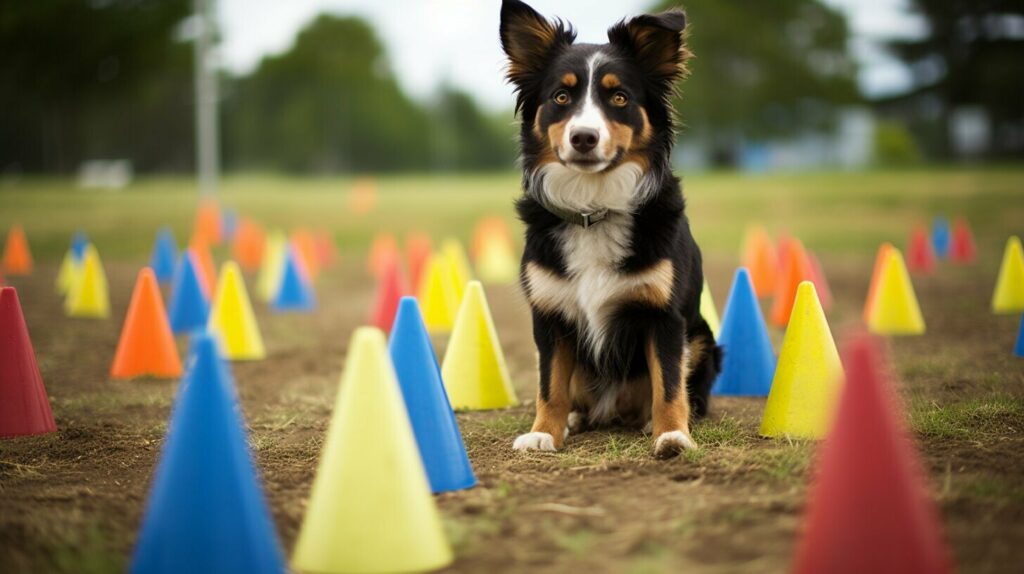
Important Dog Training Commands: Strengthening the Bond with Your Dog
Training your dog doesn't have to be just about obedience. In fact, incorporating some fun commands can help strengthen the bond between you and your furry friend. These important dog training commands can also provide mental stimulation and physical exercise for your pet.
One of the most popular and fun commands to teach your dog is "shake hands." This simple command involves your dog lifting one paw and placing it in your hand. It's a great way to show off your dog's obedience skills and also adds a cute trick to their repertoire.
"Fetch" is another classic command that is both fun and beneficial for your dog's physical exercise. This command involves your dog retrieving a toy or object and bringing it back to you. It's important to ensure that your dog understands the "drop it" command to avoid any issues with objects they shouldn't be playing with.
"Roll over" is another fun trick that can show off your dog's obedience and intelligence. This command involves your dog rolling over onto their back and exposing their belly. It's a great way to train your dog to be comfortable with handling and grooming.
Lastly, teaching your dog to "give paw" is another fun and impressive trick. This command involves your dog lifting their paw and placing it in your hand. It's a great way to show off your dog's obedience skills and also adds a cute and interactive element to your training sessions.
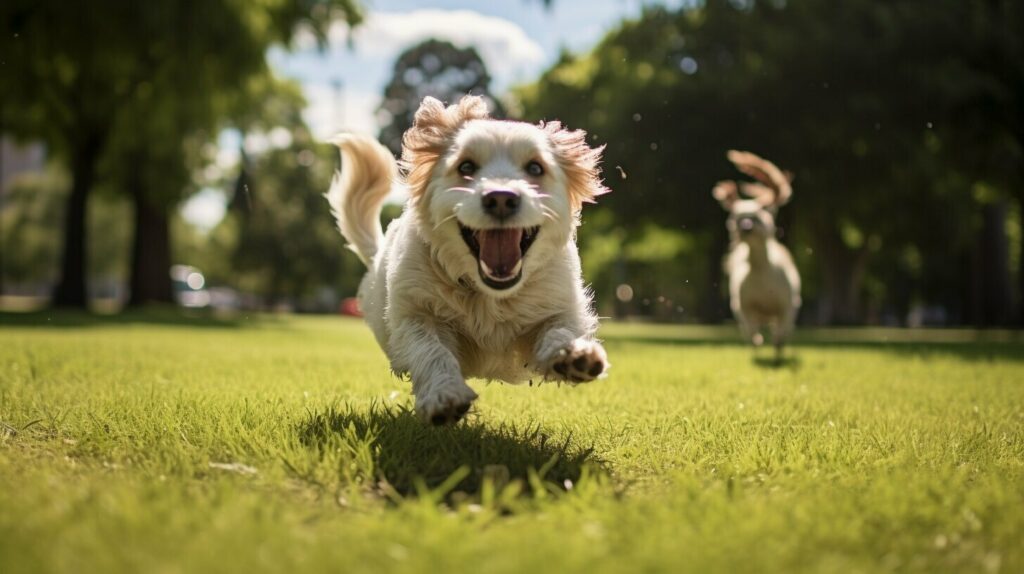
Remember to keep training sessions fun and rewarding for both you and your pet. Incorporating these important dog training commands into your routine can help strengthen the bond between you and your furry friend while also ensuring they receive mental and physical stimulation.
Effective Dog Obedience Commands: Proven Techniques for Success
What makes dog obedience training successful? There are many factors, but the most important is using effective dog obedience commands and techniques. Here are some proven approaches to ensure success when training your furry friend.
| Technique | Description |
|---|---|
| Positive Reinforcement | Using rewards, such as treats or verbal praise, to encourage good behavior and obedience. This technique reinforces the desired behavior, making it more likely to occur again in the future. |
| Clicker Training | A form of positive reinforcement where a clicker is used to signal good behavior, followed by a reward. This technique creates a clear communication channel between the owner and the dog. |
| Consistency | Using the same commands and rewards consistently during training sessions. Dogs thrive on consistency and repetition, making it easier for them to learn and follow commands. |
When using these techniques, it is important to focus on the specific dog obedience commands that you want your dog to learn. Breaking down each command into smaller steps and practicing them regularly can help your dog master the command quickly.
For example, if you are teaching the command "sit," break it down into shorter steps such as "lower your head," "bend your legs," and "sit on your haunches." By rewarding each step and practicing consistently, your dog will learn the full command in no time.
Remember, dogs respond best to positive reinforcement and consistency. By using effective dog obedience commands and techniques, you can ensure success in your dog's obedience training and build a stronger bond with your furry friend.

Advanced Dog Training Commands: Taking Obedience to the Next Level
If your dog has successfully mastered the basic and popular commands, it's time to take their obedience training to the next level with some advanced commands. These commands will challenge your dog's intelligence and obedience, making training sessions more interesting and stimulating for both you and your furry friend.
One advanced command that you can teach your dog is "speak." This command involves getting your dog to bark on cue, which can be useful for alerting you to potential dangers or as a trick to entertain guests. Start by getting your dog to bark naturally by knocking on a door or ringing a bell. Once they start barking, say the word "speak" and reward them with a treat. Repeat this process until your dog associates the word "speak" with barking on cue.
Another advanced command is "play dead." This command involves getting your dog to lie down on their side as if they are dead. Start by getting your dog to lie down and then gently roll them onto their side. Say the command "play dead" and reward them with a treat. Gradually increase the length of time that your dog stays in this position until they can stay there for several minutes.
A third advanced command is "crawl." This command involves getting your dog to crawl on their belly. Start by getting your dog to lie down, then hold a treat just out of their reach. Slowly move the treat forward so that your dog has to crawl to reach it. Repeat this process until your dog can crawl several feet on command.
Finally, "find it" is another advanced command that involves getting your dog to find a hidden object. Start by getting your dog to sit and stay, then hide an object in plain sight. Say the command "find it" and encourage your dog to locate the object. Reward them with a treat when they find it. Gradually increase the difficulty of the hiding spots until your dog can find objects that are well-hidden.
These advanced commands are just a few examples of how you can take your dog's obedience training to the next level. Remember to be patient and consistent when teaching these commands, and always reward your dog for their hard work and success.
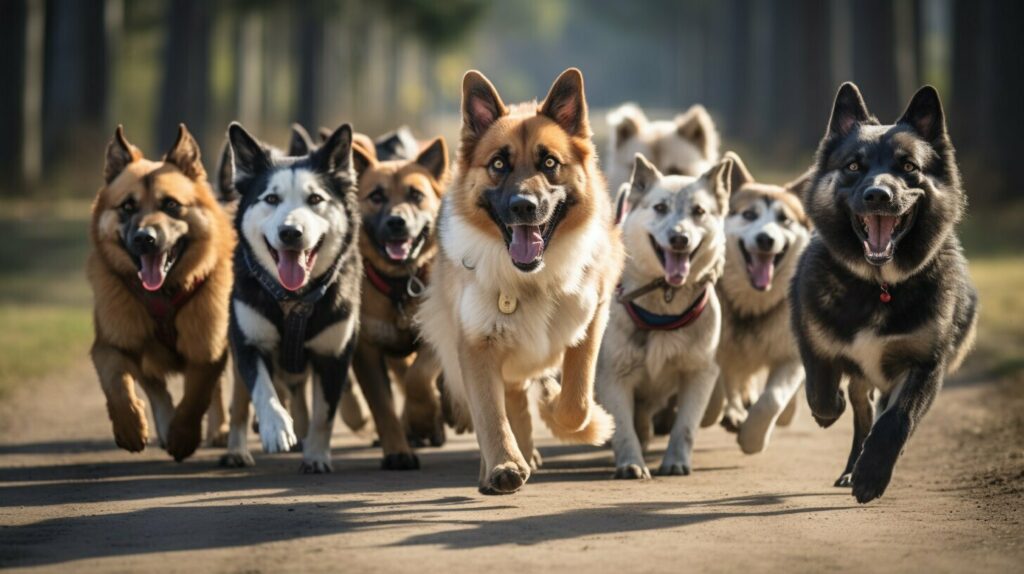
Conclusion
Dog obedience commands are essential in ensuring a well-behaved and responsive companion. By mastering basic commands such as "sit," "stay," "down," "come," and "heel," you can establish a strong communication channel with your dog and set the groundwork for more advanced training.
Popular commands such as "leave it," "drop it," "wait," and "off" help to enhance communication and control in everyday situations. Essential commands like "quiet," "place," "stand," and "watch me" contribute to building a more disciplined, attentive, and responsive dog.
A comprehensive list of dog commands, categorized into basic, popular, and essential categories, serves as a handy reference guide for dog owners looking to expand their training repertoire. Important training commands like "shake hands," "fetch," "roll over," and "give paw" add an element of fun and interaction to training sessions, making them more enjoyable for both you and your dog.
Effective dog obedience commands such as positive reinforcement, clicker training, and consistency in command delivery have been proven to yield successful results. By implementing these techniques alongside appropriate commands, you can achieve optimal results in your dog's obedience training.
Remember to Have Fun!
Lastly, while training your dog can be challenging at times, it should also be a fun and rewarding experience. Don't forget to mix in plenty of playtime and positive reinforcement to keep your furry friend engaged and motivated. By incorporating these techniques and commands into your training routine, you can create a stronger bond with your dog and enjoy a more fulfilling relationship together.
FAQ
Q: What are dog obedience commands?
A: Dog obedience commands are verbal or hand signals given to a dog to teach them specific behaviors and actions. These commands help establish communication, control, and discipline between the dog and the owner.
Q: Why are dog obedience commands important?
A: Dog obedience commands are important because they ensure a well-behaved and responsive companion. They establish a clear line of communication between the owner and the dog, making training and daily interactions easier. Obedience commands also help keep the dog safe and prevent unwanted behaviors.
Q: What are some basic dog training commands?
A: Some basic dog training commands include "sit," "stay," "down," "come," and "heel." These commands form the foundation of obedience training and are essential for a well-trained dog.
Q: Can I teach my dog advanced obedience commands?
A: Yes, you can teach your dog advanced obedience commands once they have mastered the basic commands. Advanced commands such as "speak," "play dead," or "crawl" challenge your dog's intelligence and expand their capabilities. However, it is important to build on a solid foundation of basic obedience training before introducing advanced commands.
Q: How can I effectively train my dog in obedience commands?
A: Effective training in obedience commands involves consistency, positive reinforcement, and patience. Use rewards such as treats or praise to reinforce desired behaviors and be consistent in your training methods. Break down commands into small steps and gradually increase difficulty. Seek professional help if needed.
Q: What are some popular dog obedience commands?
A: Some popular dog obedience commands include "leave it," "drop it," "wait," and "off." These commands are useful in everyday situations and help enhance communication and control between the owner and the dog.
Q: Can dog obedience commands strengthen the bond between me and my dog?
A: Yes, dog obedience commands can strengthen the bond between you and your dog. Training together creates a positive and interactive experience that builds trust and understanding. It also establishes you as the leader and creates a sense of security for your dog.
Q: Is it necessary to teach my dog essential obedience commands?
A: Yes, teaching essential obedience commands such as "quiet," "place," "stand," and "watch me" is important for building a well-behaved companion. These commands help your dog become more disciplined, attentive, and responsive in various situations.
Q: Where can I find a comprehensive list of dog obedience commands?
A: You can find a comprehensive list of dog obedience commands in the "List of Dog Commands" section of this article. It categorizes commands into basic, popular, and essential categories and provides a brief explanation of each command's purpose.
Q: How long does it take to train a dog in obedience commands?
A: The time it takes to train a dog in obedience commands varies depending on the dog's breed, age, and individual temperament. Consistency and regular training sessions are key to effective training. Some dogs may learn commands quickly, while others may take more time. Patience and persistence are important.


